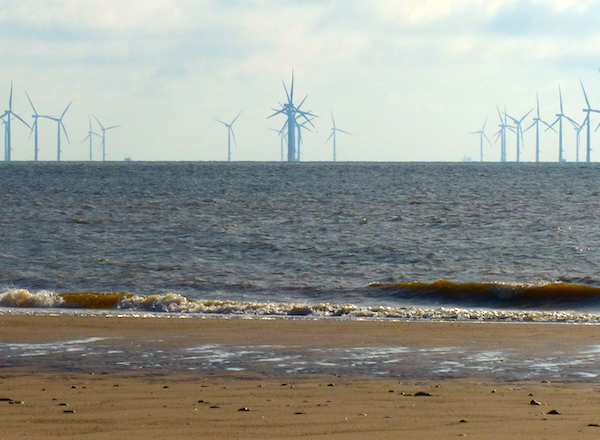Background
Airborne wind turbines can operate at different altitudes and they are mainly of two types:
- High-altitude wind power
- Crosswind kite power
Both types fall into the wider category called Airborne Wind Energy Systems (AWES).
AWES can “fly” like a kite and harness energy at higher altitude (circa 800m) where wind blows at higher speed and with more consistency. This technology is currently being tested, and it is expected to be commercially ready by next year. Currently, a single kite is expected to have a capacity of 200kW.

Figure 1 – Kiwee One, an airborne wind turbine designed by Kitewinder.[1]
Turbine components and size
The structure of this type of airborne wind turbine will be composed of a parachute or drone-like system needed to fly the turbine which will implement one or more rotors and in certain cases a generator. The kite will be anchored to the ground with an 800-metre-long tether. Currently, the size of this type of turbine is limited (5.5m in wingspan) however the target is to create turbines with a wingspan of 36m.[2]
The potential risks for aviation
It is very likely that this technology will have a significant impact upon aviation and radar.
Airborne wind turbines will of course occupy less horizontal space due to their limited dimensions, but they will be more intrusive than common wind turbines since they will reach higher heights. This characteristic will pose some issues with regards to smooth flight operation not only at nearby airports but also elsewhere.
In this case, sensible solutions to mitigate the issue can be:
- Creating guidance to establish the minimum distance at which aeroplanes can fly,
- Equipping the turbine with an ADS-B transponder in order to improve its geolocation and the data transmission,
- Equipping both the wind turbine and the tether with lights
With regards to radar the issues might be similar to the one encountered for wind turbines[3]. However, due to the altitude of AWES, the impact can be significant since it will be easier to have line of sight between the turbine and radar, this can lead to:
- Blocking the signal: AWES, despite their small size, can block radar signals. However, signal is often weakened and not fully blocked and most likely the interference with radar will be minimal.
- Reflecting the signal: AWES can reflect radar signals. However, due to their small size impact may be minimal.
- Emitting signals: electronic equipment on board of an AWES can generate fake signals (they might appear as aeroplanes on the radar display). This problem might be exacerbated for those AWES implementing the generator on the flying structure.
Conclusion
AWES technology can expand the potential for wind energy. However, it can pose some problem for aviation. As a small, physical obstacle with a tether it might be hard for pilots to detect the AWES position. Therefore, adequate localisation systems and lighting should be implemented together with efficient guidance. With regards to radar, impacts are expected. However, due to the size of such structures, they might be not significant.
Pager Power has expertise in carrying out radar impact assessments and aerodrome safeguarding assessments and can help developers to assess the risk of AWES upon aviation.
References
[1] Kiwee One, an airborne wind turbine designed by Kitewinder, Olivierabristol, date: 01/07/2017, last access: 02/07/2019, accessible at: https://commons.wikimedia.org/wiki/File:Kiwee_One.jpg
[2] An innovative approach to making electricity from the wind, The Economist, date: 06/07/2019, last access: 02/07/2019, accessible at: https://www.economist.com/science-and-technology/2019/06/06/an-innovative-approach-to-making-electricity-from-the-wind
[3] Wind Turbines impact upon ADS-B and Multilateration, Andrea Mariano, date: 13/07/2019, last access: 03/07/2019, accessible at: https://www.pagerpower.com/news/wind-turbines-impact-upon-ads-b-and-multilateration/



